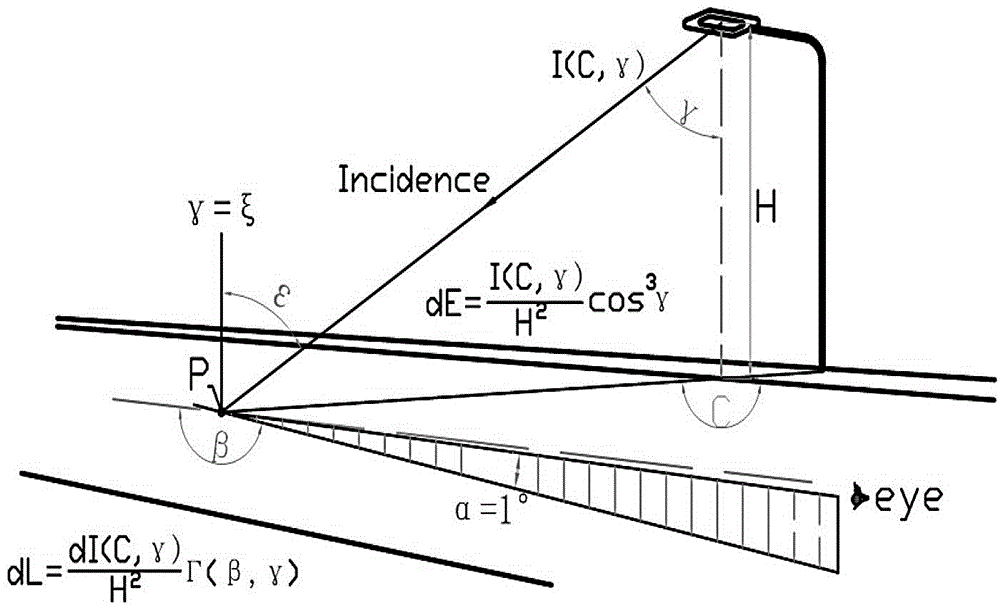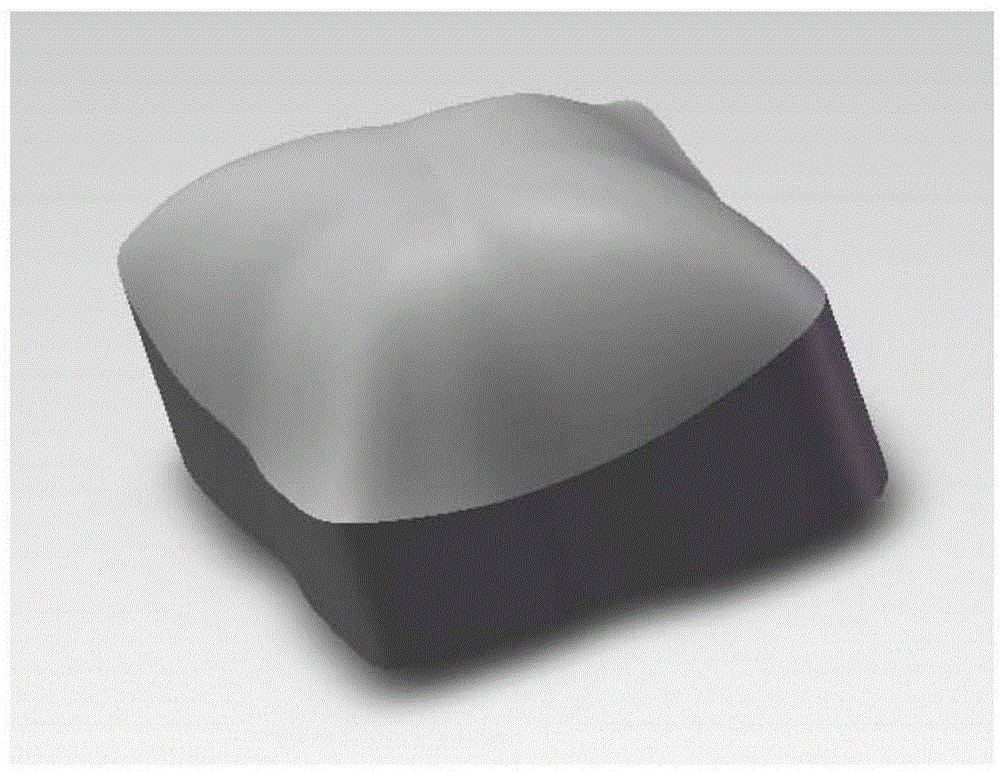Secondary light distribution method based on brightness
A secondary light distribution and brightness technology, applied in the direction of light source, point light source, lighting device components, etc., can solve the problem of neglecting brightness measurement, and achieve the effect of brightness uniformity and no glare
- Summary
- Abstract
- Description
- Claims
- Application Information
AI Technical Summary
Problems solved by technology
Method used
Image
Examples
Embodiment Construction
[0025] A secondary light distribution method based on brightness in the present invention comprises the following steps:
[0026] Step 1. Establish a mathematical model according to road lighting requirements (such as figure 2 ), to find the light intensity distribution in the image space:
[0027] CIE144-2001 proposes a reflection coefficient table Γ(β, Tanγ) for different road surfaces, which is used to represent the reflection performance of the road surface.
[0028] CIE144 defines luminance coefficient q(β, γ)=dL(β, γ) / dE(β, γ) ⑴ that is, the luminance coefficient is the ratio of the luminance of the measured point on the road surface to the illuminance of the point (see figure 2 );
[0029] The relationship between the brightness coefficient q(β, γ) and the reflection coefficient table Γ(β, Tanγ) is:
[0030] Γ(β,γ)=q(β,γ)*COS 3 gamma (2)
[0031] According to the national standard CJJ45-2006, the uniformity of illumination brightness of the corresponding road U ...
PUM
 Login to View More
Login to View More Abstract
Description
Claims
Application Information
 Login to View More
Login to View More - R&D
- Intellectual Property
- Life Sciences
- Materials
- Tech Scout
- Unparalleled Data Quality
- Higher Quality Content
- 60% Fewer Hallucinations
Browse by: Latest US Patents, China's latest patents, Technical Efficacy Thesaurus, Application Domain, Technology Topic, Popular Technical Reports.
© 2025 PatSnap. All rights reserved.Legal|Privacy policy|Modern Slavery Act Transparency Statement|Sitemap|About US| Contact US: help@patsnap.com



